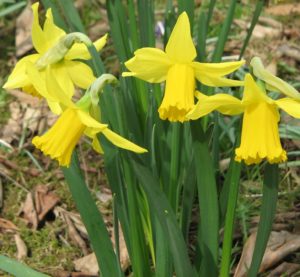Plant Bulbs Now for Spring
go.ncsu.edu/readext?559796
en Español / em Português
El inglés es el idioma de control de esta página. En la medida en que haya algún conflicto entre la traducción al inglés y la traducción, el inglés prevalece.
Al hacer clic en el enlace de traducción se activa un servicio de traducción gratuito para convertir la página al español. Al igual que con cualquier traducción por Internet, la conversión no es sensible al contexto y puede que no traduzca el texto en su significado original. NC State Extension no garantiza la exactitud del texto traducido. Por favor, tenga en cuenta que algunas aplicaciones y/o servicios pueden no funcionar como se espera cuando se traducen.
Português
Inglês é o idioma de controle desta página. Na medida que haja algum conflito entre o texto original em Inglês e a tradução, o Inglês prevalece.
Ao clicar no link de tradução, um serviço gratuito de tradução será ativado para converter a página para o Português. Como em qualquer tradução pela internet, a conversão não é sensivel ao contexto e pode não ocorrer a tradução para o significado orginal. O serviço de Extensão da Carolina do Norte (NC State Extension) não garante a exatidão do texto traduzido. Por favor, observe que algumas funções ou serviços podem não funcionar como esperado após a tradução.
English
English is the controlling language of this page. To the extent there is any conflict between the English text and the translation, English controls.
Clicking on the translation link activates a free translation service to convert the page to Spanish. As with any Internet translation, the conversion is not context-sensitive and may not translate the text to its original meaning. NC State Extension does not guarantee the accuracy of the translated text. Please note that some applications and/or services may not function as expected when translated.
Collapse ▲Now’s the time to think spring; to conjure thoughts of yellow daffodils and bright tulips, of hyacinths and even the crocuses of late winter. November is an ideal time to plant flower bulbs for most parts of the state.
Selecting quality bulbs and planting them properly is important, but so is planning ahead. When choosing a site to plant bulbs, think about how the flowers will blend in with the rest of your landscape, and even how they will go with other bulbs you have planted.
Alliums, crocuses, and scillas, for example, are early bulbs, often breaking ground in March when your yard will probably have a barren winter look. Tulips, hyacinths, and daffodils begin to bloom around April. Remember to put taller flowers behind shorter ones.
Small bulbs should be planted about 5 inches deep, while large ones should go about 8 inches underground. Measure from the bottom of the bulb to the soil level. And be sure to loosen the soil beneath the bulbs.
The distance between bulbs should be 4 to 6 inches for large bulbs and about 1 or 2 inches for small ones.
The winter cold helps bulbs by triggering dormancy, so avoid planting them near heated basements. For the same reason, bulbs grow better in areas that don’t get direct sunlight during the middle of the day.
You can grow the flowers just about any place in your yard, as borders, in beds, mixed in with rock

Spring Bulb – Dafodils
gardens or even sprinkled in wooded areas.
When selecting bulbs, choose those that are firm to the touch. Loose skins and small nicks aren’t a problem, the nicks might even encourage rooting.
Up until the time you plant the bulbs, keep them where the temperature does not get above 65 degrees. Don’t plant until the soil temperature drops below 60 degrees.
Fertilize bulbs in the fall only or in the fall and again in the spring. During planting, incorporate one rounded tablespoon per square foot in the rooting area of the dug up soil. In the spring, fertilize as soon as shoots break ground.
For more Information try:




